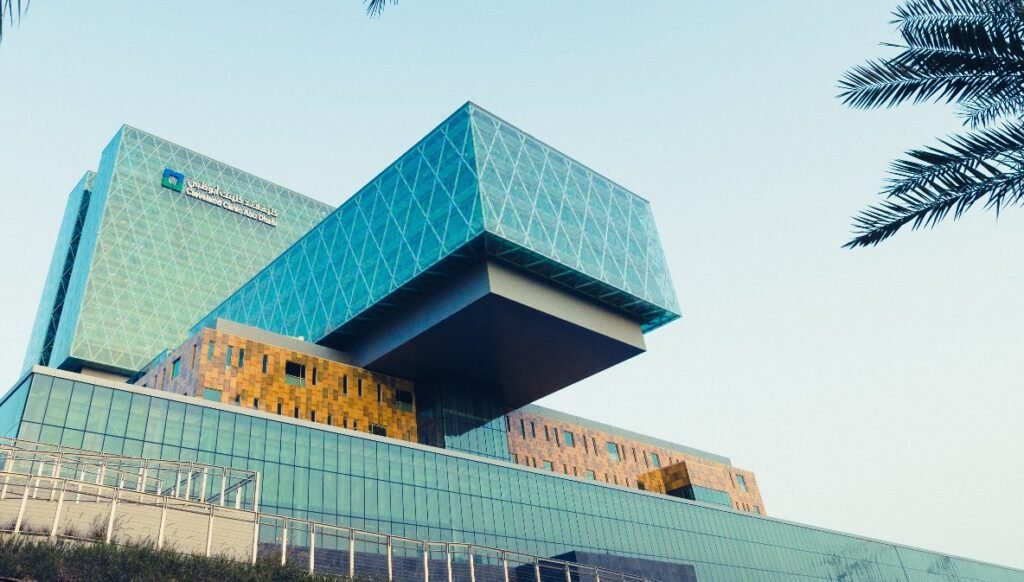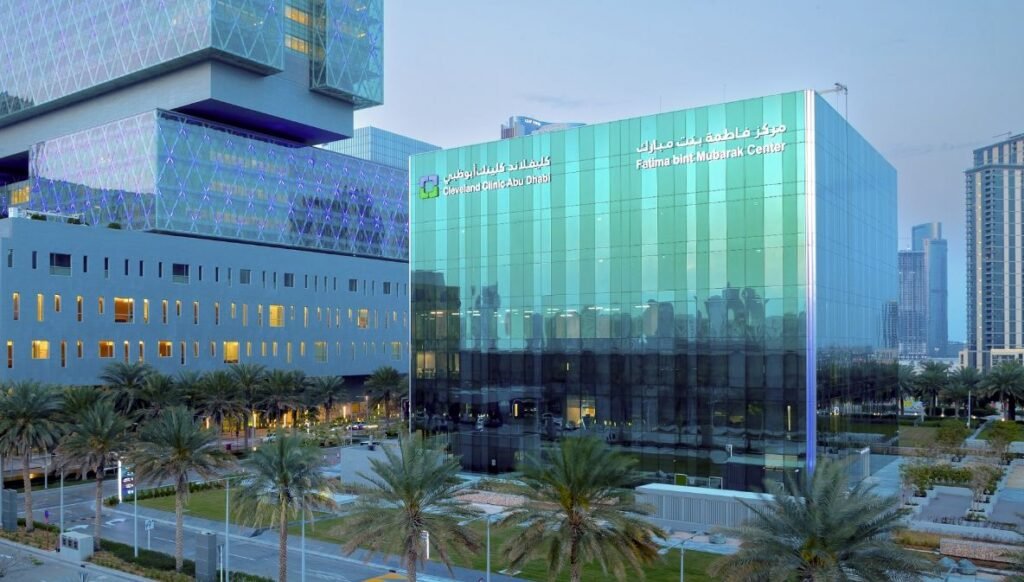Cleveland Clinic Abu Dhabi has made history by successfully performing the first robotic cytoreductive surgery with HIPEC in the UAE. This major medical achievement offers new hope to patients suffering from advanced abdominal cancers. By combining the latest robotic surgical techniques with heated chemotherapy treatment, the hospital has set a new standard for cancer care in the region.
This article explains what this surgery involves, why it matters, the benefits it offers patients, and what this breakthrough means for healthcare in the UAE.
What is Robotic Cytoreductive Surgery with HIPEC?
Robotic cytoreductive surgery is a highly specialized surgical procedure that removes cancerous tumors from the abdomen using robotic technology. The word “cytoreductive” means reducing the number of cancer cells in the body by surgically removing visible tumors.

After the tumors are removed, the surgery is followed by a treatment called HIPEC, which stands for Hyperthermic Intraperitoneal Chemotherapy. In HIPEC, heated chemotherapy drugs are delivered directly into the abdominal cavity. This heated chemotherapy kills any remaining cancer cells that are too small to be removed by surgery.
Together, these two treatments provide a powerful one-two punch against certain types of cancer that affect the lining of the abdomen.
Why is This Surgery a Game-Changer for the UAE?
Before this operation was performed at Cleveland Clinic Abu Dhabi, patients in the UAE had to travel abroad to get this advanced treatment. Such travel can be costly, stressful, and delay the start of critical care. Having access to this treatment locally means more patients will get timely, world-class cancer care.
This surgery is also a sign that the UAE is rapidly growing as a medical hub for advanced treatments in the Middle East. The UAE government and healthcare providers have invested heavily in cutting-edge technology, training doctors, and expanding hospital facilities.
The success of this surgery demonstrates the country’s commitment to healthcare innovation and improving patient outcomes. It also builds trust among patients and medical professionals in the region.
How Does Robotic Cytoreductive Surgery Work?
Robotic cytoreductive surgery uses a robotic system that the surgeon controls from a console. Instead of making one large incision as in traditional open surgery, the surgeon makes several small incisions. The robotic arms and tiny surgical instruments enter through these incisions.
The robotic system provides:
- Enhanced precision
- Greater flexibility
- Magnified 3D views of the surgical area
This allows the surgeon to carefully remove tumors from delicate or hard-to-reach parts of the abdomen. Because the procedure is minimally invasive, patients typically experience less pain and faster recovery compared to open surgery.
The Role of HIPEC in the Surgery
After the visible tumors are surgically removed, the surgeon performs HIPEC. This involves circulating heated chemotherapy drugs inside the abdominal cavity for about 60 to 90 minutes.
The heat helps the chemotherapy drugs penetrate tissues better and work more effectively against cancer cells. It also kills cancer cells that might remain after surgery but are too small to see or remove.
HIPEC is targeted, so it delivers high doses of chemotherapy directly where it’s needed without causing as many side effects as systemic chemotherapy (which affects the whole body).
Types of Cancers Treated with This Procedure
Robotic cytoreductive surgery with HIPEC is mainly used for cancers that spread inside the abdomen. These include:
- Peritoneal carcinomatosis (cancer spread in the abdominal lining)
- Appendiceal cancer
- Ovarian cancer
- Colorectal cancer with peritoneal spread
- Mesothelioma (cancer of the abdominal lining)
Not all patients are suitable candidates for this treatment. Careful assessment by oncologists and surgeons is required before proceeding.
Patient Selection and Preparation
At Cleveland Clinic Abu Dhabi, a multidisciplinary team of specialists carefully evaluates each patient before surgery. This includes:
- Detailed imaging scans such as CT or MRI
- Blood tests and biopsies
- Assessments of overall health and fitness for surgery
The team discusses the risks and benefits with the patient and their family to make an informed decision.
Preparation for surgery includes physical conditioning, nutritional support, and sometimes pre-treatment with chemotherapy to shrink tumors.
The Surgery Day: What Happens?

On the day of surgery, the patient is placed under general anesthesia. The surgeon makes small incisions in the abdomen and inserts the robotic instruments.
Using the robotic system, the surgeon removes all visible cancer tumors. This may take several hours depending on the extent of the disease.
Next, the HIPEC treatment is given. Heated chemotherapy is pumped into the abdominal cavity and circulated to reach all affected areas.
After treatment, the chemotherapy is drained, the instruments are removed, and the incisions are closed.
Benefits of Robotic Cytoreductive Surgery with HIPEC
Patients benefit from this combined surgery in many ways:
- Minimally invasive: Smaller cuts mean less pain and faster healing.
- Precise tumor removal: Robotic tools help surgeons remove tumors more completely.
- Powerful chemotherapy delivery: HIPEC targets cancer cells directly in the abdomen.
- Better survival rates: Studies show improved long-term survival compared to traditional treatments.
- Shorter hospital stays: Many patients leave the hospital sooner.
- Reduced complications: Lower risk of infections and other surgery-related problems.
Patient Outcomes and Experience at Cleveland Clinic Abu Dhabi
The first patient to receive this treatment at Cleveland Clinic Abu Dhabi has already shown encouraging signs of recovery. Doctors report reduced pain, fewer complications, and quicker healing compared to traditional surgery.
The patient’s feedback highlights the comfort and care received at the hospital, from pre-op counseling to post-surgery rehabilitation.
This successful case is paving the way for more patients to access this life-saving treatment locally.
Expertise and Training Behind the Surgery
Performing robotic cytoreductive surgery with HIPEC requires a highly skilled surgical team trained in both robotic techniques and HIPEC protocols.
Cleveland Clinic Abu Dhabi’s surgeons have undergone specialized training internationally and work with a multidisciplinary team including oncologists, anesthesiologists, nurses, and technicians.
Continuous training and quality improvement help ensure patients receive the safest and most effective care.
Future Prospects for Cancer Care in the UAE
This milestone is just the beginning. With growing expertise and investments, more hospitals in the UAE will likely offer advanced cancer treatments like robotic surgery and HIPEC.
The success of this surgery positions the UAE as a leader in the region for complex cancer care. It also encourages ongoing research and innovation.
Patients no longer need to travel abroad for such treatments, reducing costs and improving quality of life.
What Patients Should Know Before Considering This Surgery

Not every patient is a candidate for robotic cytoreductive surgery with HIPEC. Factors influencing eligibility include:
- Type and extent of cancer
- Patient’s overall health
- Response to other treatments
Patients should consult with their oncology team to explore options.
It is important to understand the potential risks, benefits, and the need for follow-up care.
Post-Surgery Care and Follow-Up
Recovery after this surgery involves:
- Hospital stay for monitoring and pain management
- Early mobilization and physical therapy
- Nutritional support to aid healing
- Regular check-ups to detect any recurrence of cancer
Doctors also monitor for side effects of chemotherapy and provide supportive care.
Conclusion: A New Era in Cancer Treatment in the UAE
Cleveland Clinic Abu Dhabi’s successful performance of the UAE’s first robotic cytoreductive surgery with HIPEC is a landmark achievement. It brings world-class cancer treatment closer to home for many patients.
By combining precision robotic surgery with powerful targeted chemotherapy, this approach offers new hope for people battling advanced abdominal cancers.
This success reflects the UAE’s growing healthcare capabilities and commitment to innovation.
Patients and families can now look forward to safer, more effective treatments with faster recovery and better outcomes.
Do follow UAE Stories on Instagram
Read More: Dubai Metro Blue Line Will Feature the Tallest Station Ever













